Italian espresso formula making method Espresso proportional time pressing powder step process
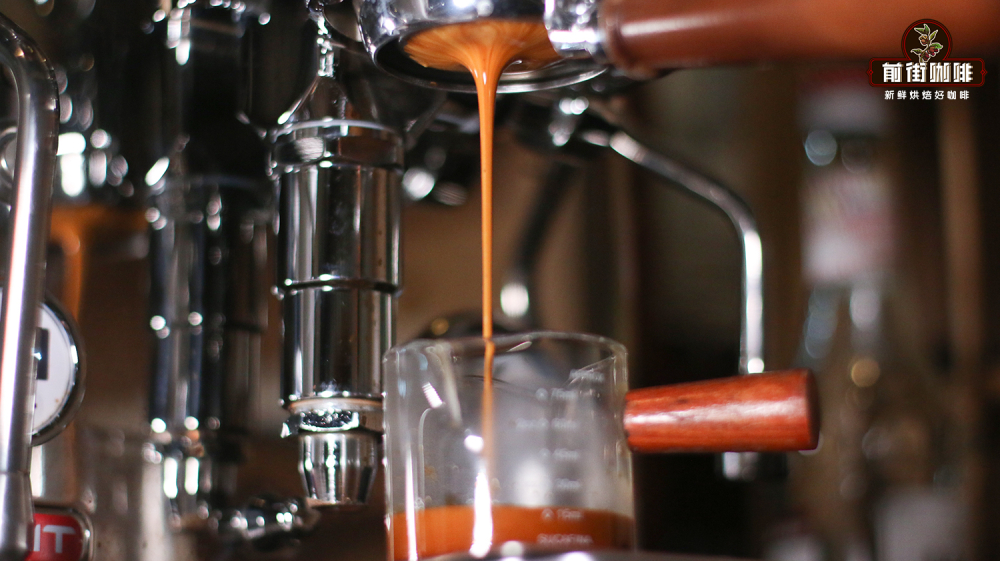
Professional coffee knowledge exchange more coffee bean information please follow the coffee workshop (Wechat official account cafe_style)
A coffee shop usually has a variety of espresso, such as popular lattes and American coffee. And for these coffee can not do without a cup of qualified espresso. Qianjie also shared a lot about the extraction scheme of espresso. Today, let's talk about how to easily extract a qualified espresso in front of the street. What parameters should be paid attention to in extracting espresso? When making espresso, we should measure at least three main parameters: powder amount, extraction amount and extraction time. As baristas on the front street, they check these three parameters every morning, and some baristas may even frantically check the extraction parameters of each cup of coffee.
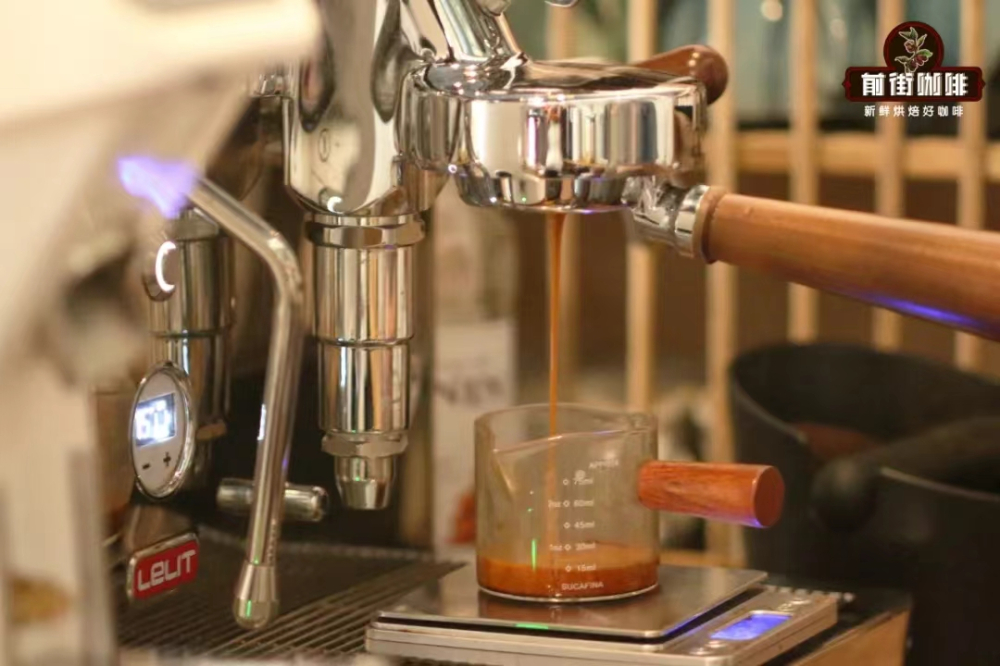
It is worth noting that Qianjie recommends using a double espresso powder bowl for extraction. From the point of view of Qianjie Coffee, we should only use double powder bowls to make espresso as far as possible, and it's best never to touch a single handle. Of course that's another topic, this time let's focus on the recipe. Powder quantity: powder quantity refers to the weight of coffee powder you are using. The amount of coffee powder is usually measured in grams. It is generally believed that for double espresso, the amount of coffee powder is between 14 and 24 grams (depending on the size of the powder bowl). In that dark age when all coffee beans were roasted black and oily at their best, 14 grams used to be the powder parameter of the golden rule. Fortunately, in the past 10 years, the wind has changed, and now the coffee beans that make espresso are gradually roasted in medium and deep roasting, and begin to become shallower, with the increase in the amount of coffee powder.
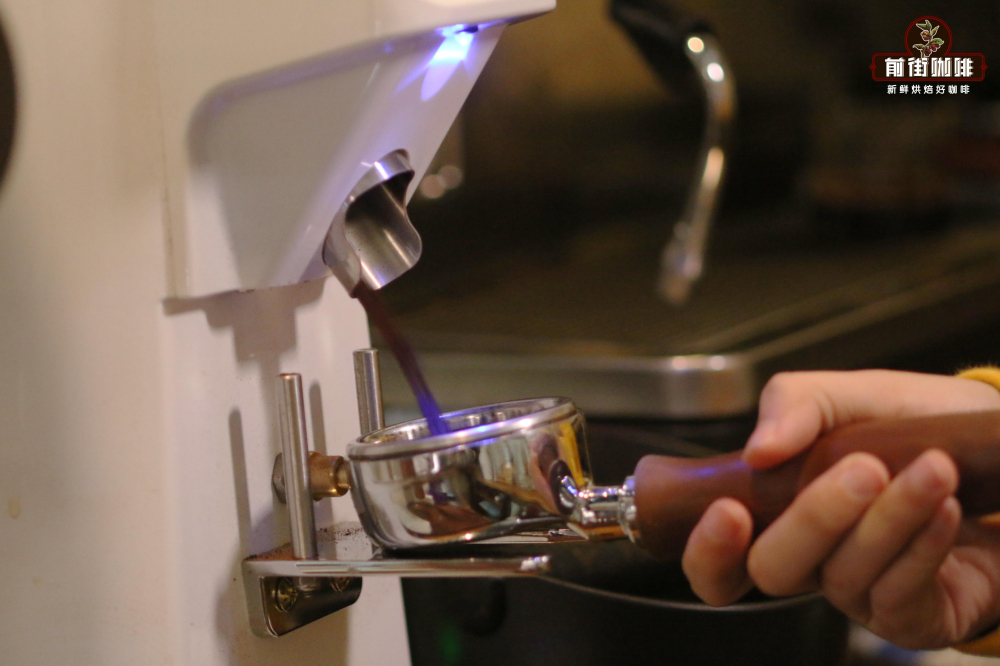
We should take the amount of powder as the first parameter to adjust. So how do we know how many grams we should use? This is the easiest step in the recipe making process-check the capacity of your double powder bowl. The capacity of the powder bowl and the baking degree of the coffee beans basically determine how many grams of coffee powder you should use. For example, in the Pegasus espresso machine commonly used by editors, the standard capacity of a double powder bowl is about 20 grams. So the espresso formula used in Qianjie Coffee usually takes 20 grams of powder as the initial parameter. Of course, even if your powder bowl has a capacity of 20 grams, you can adjust the amount of powder a little more or less according to the roasting degree of the coffee beans. To put it simply, the amount of coffee powder that is deeply roasted can be a little less (18-20 grams), while that of lightly roasted coffee powder can be slightly more (20-21 grams). If you need to extract a small amount of espresso for some reason, and you need to use 14 grams of powder, it is best to replace a shallow, flat-bottomed powder bowl with less capacity. Using a large-capacity powder bowl to hold a small amount of coffee powder will increase the risk of perforation. Because it is difficult to evenly distribute the powder before pressing the powder, after pressing the powder, the gap between pressed powder and the water diversion network is too large, which is easy to produce turbulence. Once the perforation occurs, the hot water will not pass evenly through the coffee pressed powder, the overall extraction will become uneven, and the brewing parameters and flavor can not be used for reference. Amount of extraction: the amount of extraction refers to the amount of extract in the cup (coffee liquid + Crema). (unit: ml, g) the traditional amount of extraction is measured in milliliters (ml), but in the past 10 years, more and more baristas have begun to use electronic scales and measure the amount of extraction in grams (g). The advantage of measuring in grams is accurate, because there is no need to consider the effects of roasting degree and freshness of coffee beans on the Crema volume of oil, while these conditional deviations need to be considered in milliliters (ml). The amount of extraction is usually related to the amount of powder. For example, the ratio of powder to liquid at 1:2 means that when the amount of powder is 20g, the amount of extraction will be 40g. For example:
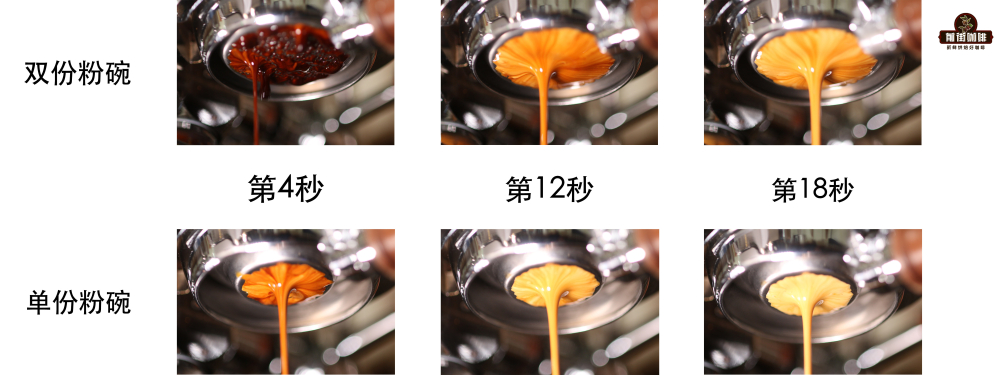
15g powder quantity: 37g extraction quantity = 1RV 2.517.5g powder quantity: 47.5g extraction quantity = 1part 2.722g powder quantity: 44g extraction quantity = 1:2 fixed powder quantity, the more the extraction amount, the more severe the dilution of the espresso (the flavor becomes weaker and weaker), and vice versa, the less the extraction amount, the higher the concentration of the espresso and the stronger the flavor. It is recommended that the formula should be made at the proportion of 1:2. Because at 1:2, most espresso can still maintain a pleasant, strong but not very irritating taste and taste all the nuances. A ratio of 1.5 may make espresso too strong, masking part of the coffee's good taste. For some coffee beans, it is all right to go to 1RV 2.5, which will reduce the intensity a little bit and make the coffee flavor clearer and more complete. Qianjie Coffee recommends that when making an espresso formula, do not easily change the 1:2 ratio until at least several different extraction times have been tested. If you think that after trying different extraction times, the 1:2 ratio still can not get satisfactory results, then you can try to change the ratio. Extraction time: extraction time refers to the time required to extract espresso. Timing starts from pressing the switch button until the amount of extraction reaches the standard. (unit: s) most institutions and books believe that the extraction time of espresso should be between 20 and 30 seconds. The deeper the baking degree, the extraction time should be as short as possible; the shallower the baking degree, the extraction time should be as long as possible. This is because the deeper the coffee is roasted, the lower the density (the lighter the higher the density), so the easier it is to extract the flavor from the coffee powder. It is recommended that the extraction time should be controlled between 20-25 seconds for deep-roasted coffee beans and 25-30 seconds for shallowly roasted coffee beans. Each coffee bean has a "sweet spot" in terms of extraction time, and the barista's job is to find this point by changing the grinding scale. The easiest way is to first try to find the extraction time when the coffee begins to become bitter, and then return to the last painless extraction time. For example, the sunflower warm sun of former street coffee with coffee beans as an example: 25 seconds = too sour, empty taste, short aftertaste; 27 seconds = bright acidity, more taste, quite good; 29 seconds = pleasant acidity, more sweetness, balanced taste and long finish; 31 seconds = sweet and bitter notes.
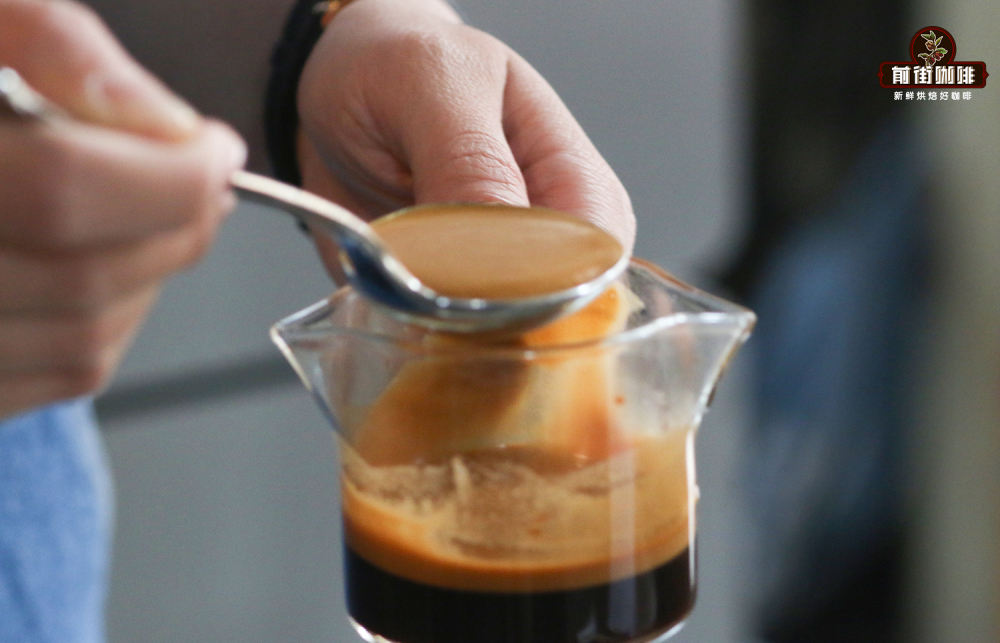
In the above case, we can choose the extraction time of 27 seconds or 29 seconds and stop the experiment, but if you want to know if you can extract more sweetness, continue. 31 seconds began to become very bitter, and we know that extraction has begun to appear at this time, so we return the extraction time of 29 seconds, which is the best extraction time for this coffee bean. Temperature: temperature refers to the temperature of the water used for extraction. (unit: ℃) temperature should not be at the top of the parameter adjustment list, but if it is difficult for your espressos to reach its best, it definitely needs to be considered. Higher water temperatures make it easier to extract, so the extraction rate is faster. If you don't think you can extract enough coffee flavor (especially lightly roasted beans) in 30 seconds, raising the water temperature may be a wise choice. Because the brewing of espresso almost begins to produce channel effect at the end of extraction (pressed powder will become loose after the flavor substances are extracted), if enough flavor substances can not be extracted before the flow rate increases, this cup of espresso will be underextracted. Before the start of extraction, find a way to increase the water temperature, you can increase the extraction rate, thus improving the overall extraction rate. Pressure distribution: it takes pressure to extract espresso. The pressure distribution means that the pressure used to extract espresso varies during different stages of extraction. (unit: bar) want to set the pressure curve, only some specific coffee machine models have this function, such as Synesso,Modbar or Slayer. Pressure increases the extraction rate, so for shallowly roasted coffee beans, a lower pressure can be used in the extraction section (the mid-pressurized tail section is then reduced), so that less acidity can be extracted. The use of lower extraction pressure in the first stage of extraction can also reduce the channel effect and obtain a higher extraction rate.
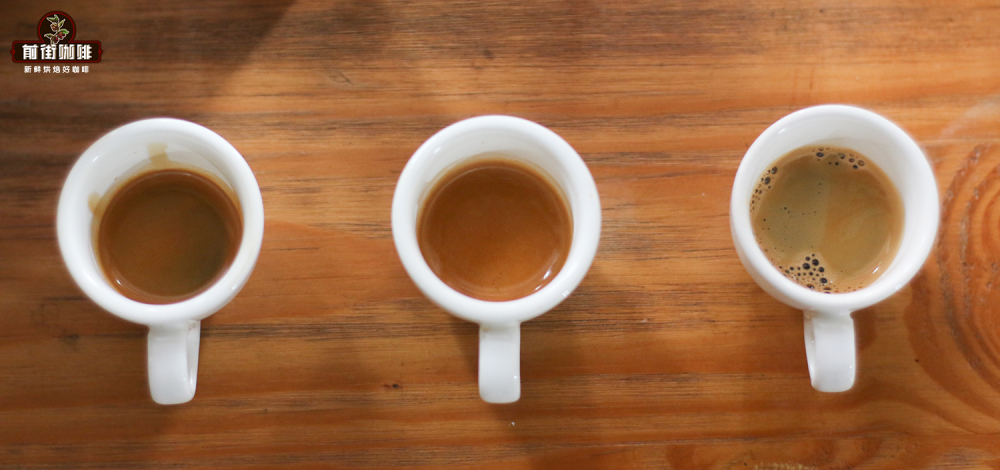
Uniform extraction: avoid perforation (channel effect) uniform extraction means that the hot water extracted evenly through the coffee pressed powder, and there is no case where one part of the pressed powder extraction is more or less than the other parts. Uniform extraction should be the ultimate goal of baristas.
As long as you pay attention to these things, understand and practice, I believe you can also extract a satisfactory espresso.
For more boutique coffee beans, please add private Qianjie coffee on Wechat. WeChat account: kaixinguoguo0925
Important Notice :
前街咖啡 FrontStreet Coffee has moved to new addredd:
FrontStreet Coffee Address: 315,Donghua East Road,GuangZhou
Tel:020 38364473
- Prev
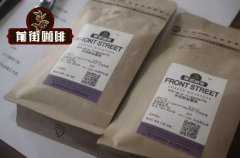
Which is better, coffee beans or coffee powder | Preservation of coffee beans | can coffee beans be kept in the refrigerator?
Professional coffee knowledge exchange more coffee bean information please follow the coffee workshop (Wechat official account cafe_style) remember that in April Qianjie Coffee wrote an article about storing coffee beans in the refrigerator and then seeing how the flavor would change (link can be poked [Front Street baristas' Note] what will happen to coffee flavor if you put coffee beans in the refrigerator and keep them?
- Next

Peruvian Coffee Business Analysis of Peruvian Coffee Brands
Professional coffee knowledge exchange more information about coffee beans please follow the coffee workshop (Wechat official account cafe_style) in 2019. In the 20 coffee year, the coffee harvest area in Peru is estimated to be 390000 hectares, a slight increase over the previous year. As part of the Ministry of Agriculture's coffee rust recovery plan, producers will continue to replace coffee trees and fertilizers to replant and cultivate new areas. Peruvian coffee
Related
- Beginners will see the "Coffee pull flower" guide!
- What is the difference between ice blog purified milk and ordinary milk coffee?
- Why is the Philippines the largest producer of crops in Liberia?
- For coffee extraction, should the fine powder be retained?
- How does extracted espresso fill pressed powder? How much strength does it take to press the powder?
- How to make jasmine cold extract coffee? Is the jasmine + latte good?
- Will this little toy really make the coffee taste better? How does Lily Drip affect coffee extraction?
- Will the action of slapping the filter cup also affect coffee extraction?
- What's the difference between powder-to-water ratio and powder-to-liquid ratio?
- What is the Ethiopian local species? What does it have to do with Heirloom native species?

